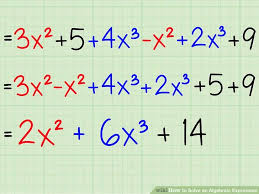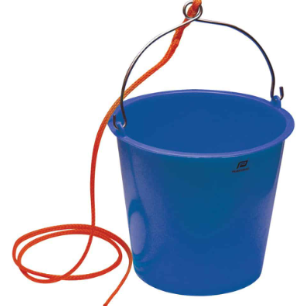How To Work Out A Math Expression

This is an image of solving an expression as a better example.
January 29, 2020
Have you ever had a hard time finding the answer to a problem in math? Do you have a hard time-solving expressions? In that case, I am here to take you step-by-step on how to solve expressions in math. In 4 easy steps, you will learn how to solve expressions!
Step 1:
First, you need to know vocabulary so you know where to place everything. Let’s begin with operation. An operation is what mathematical process you’re using to solve the problem, for example, a plus or minus sign. Variable is another vocab word. A variable is an unknown number, such as a or x. There’s also a coefficient and a constant. A coefficient is a number paired with the variable like 54a or 12xy. A constant is a number that doesn’t change because it has no variable, for instance, 2 or 98. The last two are like-terms and exponents. Exponents are the power to which a variable or number is raised. A like-term is a term that has the same variables and exponents, for example, 18xy and 14xy or 9a2 and 87a2.
Step 2:
Now it’s time to label your like-terms. Let’s use the example 24p + 3x – 9p. To show 24p and -9p are like-terms, you will circle or underline or do whatever you need to do to label them as like-terms. Then do the same for any other like-terms but in a different label. If you don’t have any other like-terms, it’s time to start combining the like-terms.
Step 3:
Use the operation needed to combine like-terms. After every like-term is combined, leave anything that has no like-terms alone. So you would combine 12xy and 9xy, or 79a and -68a. For a better example, 24p + 3x – 9p, you would take the like-terms to combine, 24p – 9p = 15p, then leave the rest alone, 3x + 15p. Then you have your answer!
Step 4:
Finally, you need to check your work over again. You might be thinking right now, I don’t want to, or, I don’t need to I already know I’m right, but it’s really going to help you. I rush through it thinking, I get every answer right because I’m smart, but then I get problems wrong. Just go back through everything you did and check if you did your operations correctly or if you added, subtracted or if you did anything accurately.
Conclusion
I hope this helped you find the answer to what you were looking for! For me, it’s certainly easy. Although, the hardest part is probably when you accidentally do step 3 wrong because then it really messes everything up. If you didn’t understand, here is a demonstration at Khan Academy.
















